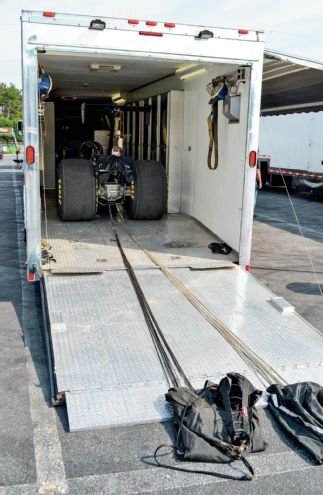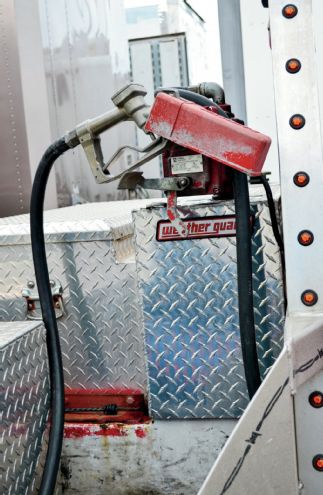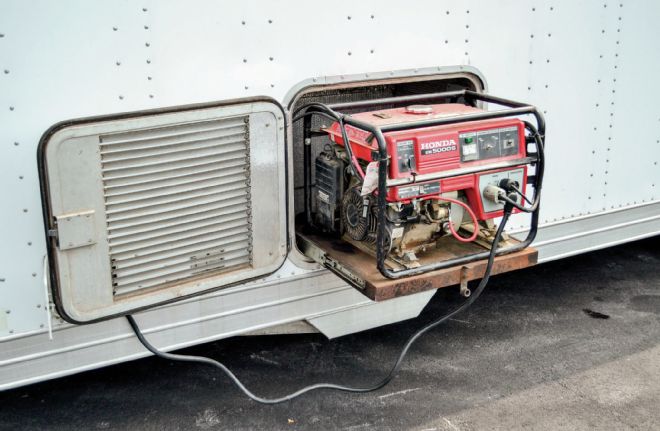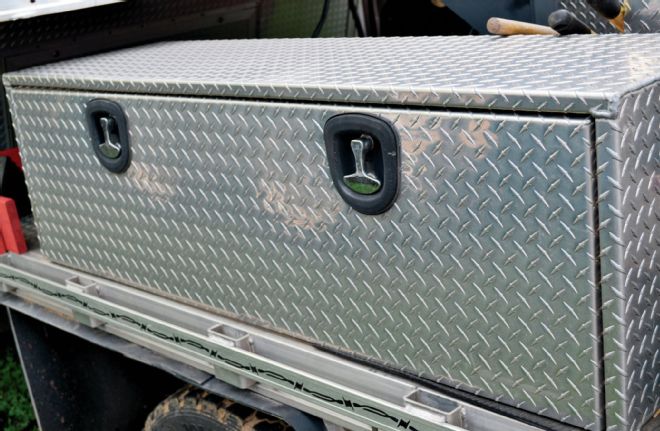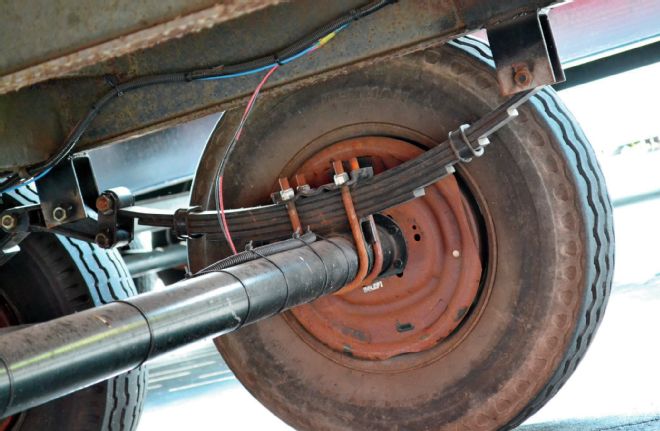Perhaps one of the greatest things about diesel trucks is the amount of freedom they afford their drivers and passengers. Modern diesels have a lot of power, can go off-road with ease, fly by slower traffic on two-lane roads, and tow with the best vehicles out there. When you really get down to it, diesel trucks are built to haul heavy loads from the frame up—it’s in this area where they really shine.
It’s for this reason that we’ve compiled a comprehensive report on the dos, don’ts, and maybes of towing. Even if you only think you’ll simply be taking a group of kids to school, it’s good to know what your truck is capable of, as you never know when you may be called upon to move a heavy load.
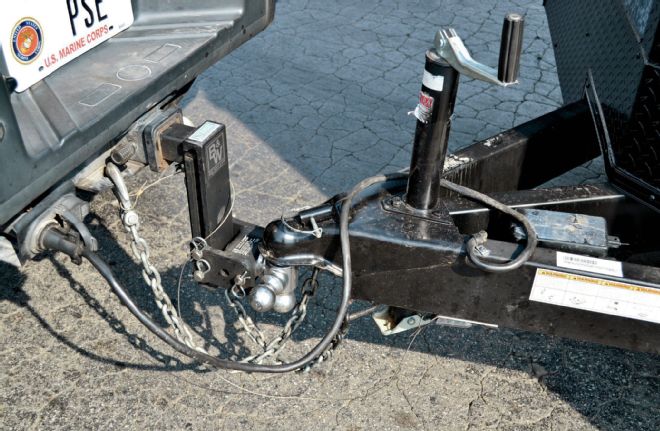
| Bumper-mounted Hitch. When you’re towing for the first time, a bumper-mounted hitch might be the type of setup you’ll use. Notice here how the jack has been raised up and secured, the safety chains are connected, the wiring pigtail is securely plugged in, and a drop hitch is being used to set the trailer at the correct height. This is a good example of a proper towing setup. Most diesels are limited to between 12,000 and 19,000 pounds in a bumper-towing arrangement.
The Beginning... ”Help, I’ve Never Towed Before!”
While many truck enthusiasts march around like they’ve been hauling loads of coal since childbirth, the fact is that everybody had to get their start somewhere. If you’re one of those people who has never towed before, the first thing to remember is to relax; even the most hardened haulers needed to learn the basics.
The first things you need to consider are what you’ll be towing, why you’ll be towing it, and if your truck and trailer are in the proper shape. To make things easier, we’ve created a few helping hints for your first time towing.
First, inspect the vehicle completely and thoroughly. This means checking tire pressure, the braking system, hitch type, brake controller (if equipped), cooling system, oil, battery voltage, tire wear, and anything else you can think of. If your vehicle breaks down, you’re stuck with a trailer that can’t go anywhere, either.
Second, do the same for your trailer. Check the tires, wheel bearings, brakes, wiring, and jack (if equipped). Also, make sure you have the appropriate tie downs for your load (chains, loads, ratchet straps, and such) and that you know how to use them. Towing improperly secured cargo isn’t just dangerous and stupid—in many places, it’s illegal.
Having a reliable spotter is one of the most valuable things a novice can have for his or her first time towing. While having a more experienced person is a plus, often just another set of eyes to help you load, turn, maneuver, or park your combined truck and trailer is extremely helpful. Advise your spotter to use his or her hands to give you distances on how far you are from something, rather than saying “Just a little more!”
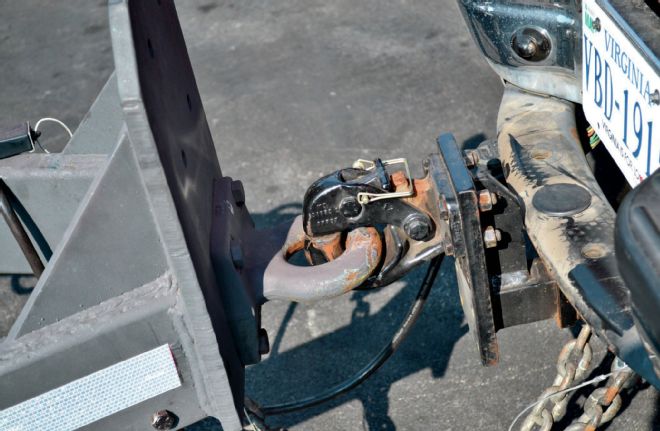
| Clevis Tow hitch.In industrial and agricultural applications, a clevis tow hitch may be used to allow the truck and trailer combination to articulate more over uneven ground without one affecting the other.
Lightweight Towing: Landscape Trailers, Utility Trailers, and Small Campers
For many people, their first towing experience is with a small trailer, which isn’t a bad thing at all. Small and light trailers are less affected by the wind, usually easy bumper-tow configurations, and often narrow and compact. While something short and light may appear to be the easiest setup to tow, there are also drawbacks. Short trailers are more difficult to back up and to turn while backing, and they require drivers to make a lot of small, corrective motions. This can make a task like backing a boat into a carport seem like an impossible chore, but usually things are a lot easier if you have a good spotter.
Lightweight trailers also seem to be easier on such things as tires and brakes, and typically, small utility trailers don’t require using a brake controller. With a 3-ton (or more) diesel truck, you’re barely going to notice the trailer is back there.
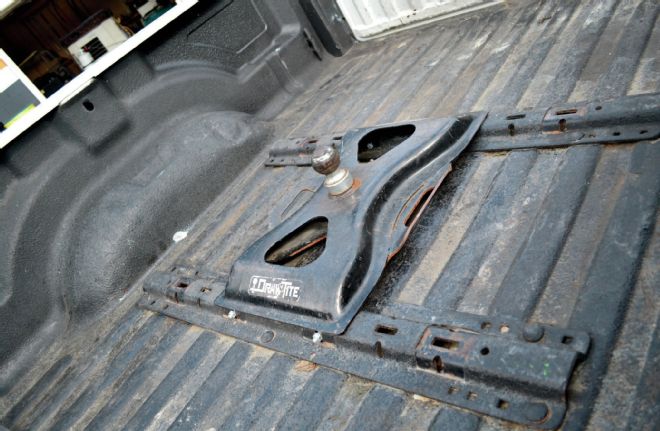
| For those not wanting to go through the hassle of having an under-the-bed hitch installed, both fifth-wheel and gooseneck hitches can also be mounted to rails on top of the bed. While this is convenient and cheaper, it does take up a lot of bed space.
Medium-Weight Towing: Campers, Car Trailers, and Small Industrial Trailers
A second popular first-tow option is a car or truck that’s on a car trailer, which usually occurs when traveling, moving, or racing. While this may sound about as simple as towing something like a landscape trailer, the added weight is something that must be taken into account. A rockcrawler on a heavy-duty trailer might weigh 8,000 pounds or more, and a race car in a fully enclosed trailer can weigh 12,000 pounds to 16,000 pounds, once you add spare parts, the car, and a Yamaha Rhino. This means stopping distances will be longer, acceleration will be slower, and loading and securing the vehicle will be more important. In the case of a flat tire, for instance, the floor jack you brought to change the tire might not be able to do the job, which means additional equipment like heavy-duty jacks must be added to the list. While maneuvering a medium-sized trailer isn’t really much more difficult than a smaller trailer, width considerations and height considerations can often become a concern.
Heavyweight Towing: Large Fifth-Wheel Campers, Multi-Car Trailers, Large Industrial Trailers
While we’d bet most people don’t start off towing a 40-foot toy hauler, there’s still some lessons to be learned when towing 20,000 to 30,000 pounds (including the toys), which is about the most anyone should be hauling down the highway with a 1-ton diesel.
-
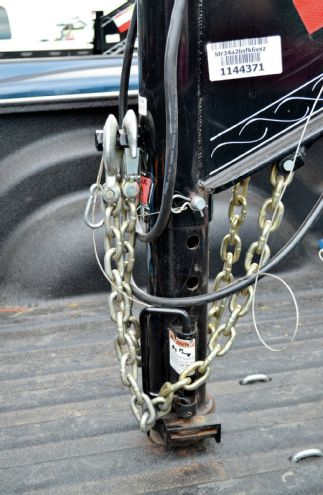
-
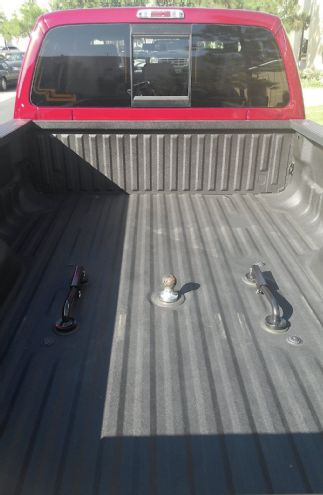
With this type of weight, stopping is severely compromised, as a normal 140- to 170-foot 60-to-0-mph panic stop may turn into more than 300 feet—even with trailer brakes. An exhaust brake is almost a must for descending grades at this weight, as running uncontrollably down a mountain with spent brakes is one of the worst feelings in the world.
Also, the truck should have plenty of power (300 hp or more); otherwise you might be stuck in the slow lane at 30 mph. While diesel trucks are very capable of towing this heavy, we’d say height, weight, and wind concerns mean the novice driver probably shouldn’t be handling these types of weights. Also, talk to other folks who tow right at a truck’s maximum hauling capacity to see which upgrades they performed, what they think their truck might still need, and what they’d change if they had to do it over again.
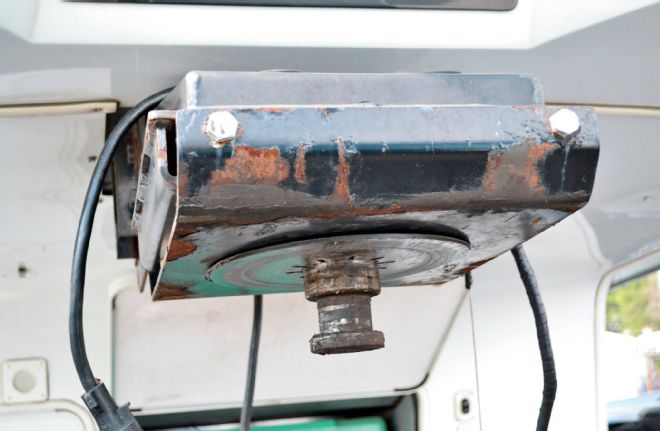
| Fifth-Wheel hitch.Here’s an example of the receiver part of a fifth-wheel hitch on a large camper. The hitch on the truck has a clevis that wraps around the pin, while the large surface area provides good weight distribution and stability, as well as a very high load capacity.
Overloading: Sled Pulling, Towing a Rail Car, towing Mining Equipment, or Towing a House
Upon first reading this, you probably thought to yourself,
Towing a house?! Yes, if something can be towed, diesel owners are crazy enough to try it—even if it is a two- story house. As the tall tale of towing goes, the house was somehow placed on a large equipment trailer, which proceeded to blow tires every few miles (the rubber apparently did not carry the “house” weight rating). Finally, a local sheriff put a stop to the shenanigans, but not after the house had been moved a few miles.
While this might be an extreme case, a fairly normal diesel truck towing 40,000 pounds at a sled pull isn’t that uncommon, with the truck-and-trailer combinations reaching speeds of up to 30 mph in just 300 feet. With any type of crazy heavy towing, remember, if there’s a weak link in the truck, this is the way to find it. From snapped driveshafts to broken rearends and even destroyed lift kits, towing extremely heavy weight is one of the hardest tasks that can be asked of a diesel truck.
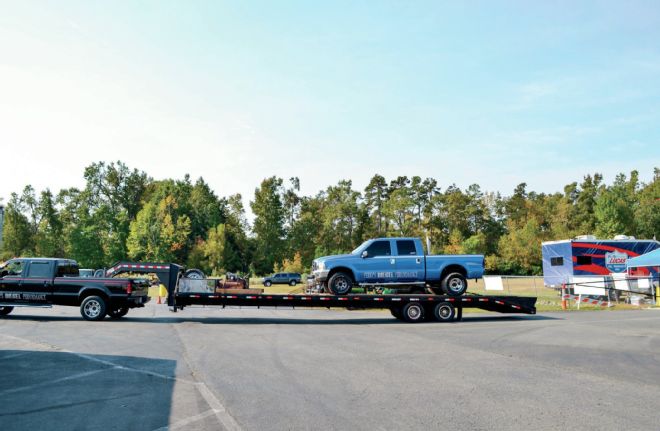
| Here’s a sight that’s seen across the Midwest all summer: a diesel towing a pulling truck. While the truck may look far back on the trailer, notice that it’s still over and slightly forward of the rear wheels, which creates a balanced load.
The Basics of Driving with a Trailer
When it comes to actually getting behind the wheel with a loaded trailer hooked up, there are a few driving procedures that differ from operating a truck without a trailer. First, when taking corners, turn later than normal and keep the truck toward the outside of the lane as much as possible. The trailer will follow a tighter arc in the turn so, to keep from running over curbs, plants, or pedestrians, point the nose of the truck toward the outside of the lane lines. On a left turn, this means keeping the truck wide right, and on a right turn, wide left.
Other than turning and finding parking spots in a city like Los Angeles, backing the trailer into a space or making three-point turns can be one of the most daunting tasks for a newbie hauler. However, there is an easy trick for backing up with a trailer. Put both hands at the bottom of the steering wheel with your thumbs out. Then, turn whichever direction you want the trailer to go by looking at your thumbs. This eliminates the whole confusing “turn left to go right, and right to turn left,” scenario. Also, if you get stuck, one of the most useful things you can do is just start over again, rather than keep turning until you jackknife, and the back of the trailer ends up right next to your door.
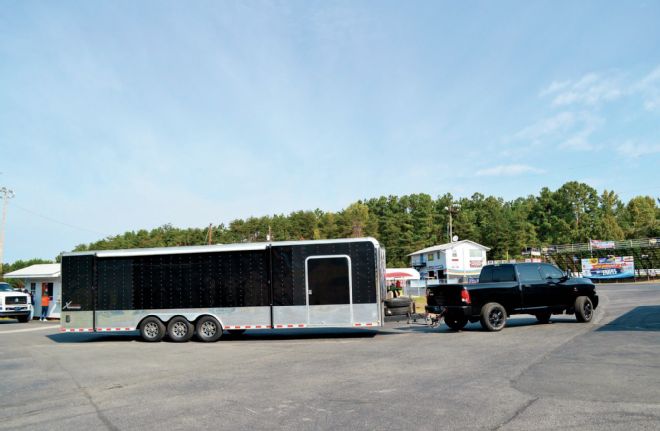
| When trying to make tight turns, especially with an enclosed trailer, be sure to take full advantage of the truck’s mirrors. Also notice that this trailer is designed to carry a good amount of weight, based upon its triple-axle design.
Summary Matching a truck with a particular job is one of the most important elements of towing. In other words, while you probably shouldn’t be towing a road grader with a 6.2L IDI GM truck, you also shouldn’t buy a $70,000 Ford F-450 just to tug your small, landscape trailer.
The hitch and trailer type should be appropriate for the weight rating of the load you’re towing, and if you don’t feel confident about driving a truck/trailer combo, you can always go to truck driving school to get proper instruction on how to do it correctly.
For the most part, though, learning how to tow involves practicing and using common sense.
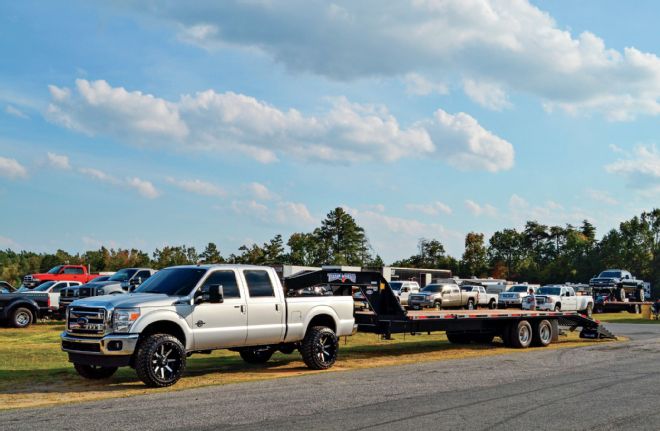
| In the end, if you want to be good at towing, you need to practice, practice, practice. Be cautious, know your truck and trailer’s capabilities, and don’t push the limits. Seek advice from drivers who know more about towing than you do. And finally, get out there and do it!
Five Real-World Towing Mistakes
1. Car Falling Off a Trailer
Just because something is tied down doesn’t mean it’s going to stay there. A strap or chain could come loose or even break. This exact thing happened to one buddy who, after loading his race truck on the back of a car trailer, looked up just in time to see it rolling right back off the trailer because he forgot to put the transmission in Park. A strap broke, resulting in the truck becoming loose. Lesson here: Replace your straps, double strap, and check your load often.
2. Punching the Tailgate In
Have you ever noticed how sometimes the trailer hitch feels like it’s secured to the towing ball, but you can’t be sure? Well, we recommend you make sure it really is locked down, because if it’s not, the tongue of the trailer can break away and wreak havoc on the back of your tow vehicle, causing severe body damage. In this case, it was only a tailgate, but it could have been much worse.
3. Blowing Up Your Engine While “Performance Towing”
We’ve seen this scenario happen with Fords, Dodges, and GMs, so if you think it’s just 6.0L Fords that have head-gasket issues, think again. If you’re the type who normally hauls using an aftermarket “Tow” PCM program but occasionally you find yourself racing your buddy up a hill while the “Wild” calibration is loaded with a fifth-wheel trailer attached to your truck, you should probably refrain from doing that. Excess exhaust gas temperature can wreak havoc on a truck’s engine, but it’s engine
coolant temperature that drivers usually forget to look at, and 300 degrees or more under full load can cause expensive internal engine damage to virtually any diesel.
4. Loads Becoming Loose Inside an Enclosed Trailer
With an enclosed trailer or camper, haphazardly loading objects throughout the trailer is a common occurrence that can have disastrous results under panic braking, hard cornering, or unexpected acceleration.
We’ve seen heavy objects punch holes in trailer walls or even put dents in the trailer exterior from the inside. Everything that’s loaded inside an enclosed trailer should be secured, regardless if it’s a car, tool chest, or spare parts. While objects may not fly out of the trailer, that doesn’t mean damage can’t still occur.
5. Driving on a Flat Tire for Miles
If you’re towing a trailer, you should probably check your mirrors frequently to make sure large chunks of the trailer’s tires aren’t flying into traffic behind you. While trailer tires are tough and can be driven on for a while even when they’re low, hauling down the road at 70 mph on a flat is a different matter. And, if you mess up your wheel, you’re really in it.
 | Bumper-mounted Hitch. When you’re towing for the first time, a bumper-mounted hitch might be the type of setup you’ll use. Notice here how the jack has been raised up and secured, the safety chains are connected, the wiring pigtail is securely plugged in, and a drop hitch is being used to set the trailer at the correct height. This is a good example of a proper towing setup. Most diesels are limited to between 12,000 and 19,000 pounds in a bumper-towing arrangement.
The Beginning... ”Help, I’ve Never Towed Before!”
| Bumper-mounted Hitch. When you’re towing for the first time, a bumper-mounted hitch might be the type of setup you’ll use. Notice here how the jack has been raised up and secured, the safety chains are connected, the wiring pigtail is securely plugged in, and a drop hitch is being used to set the trailer at the correct height. This is a good example of a proper towing setup. Most diesels are limited to between 12,000 and 19,000 pounds in a bumper-towing arrangement.
The Beginning... ”Help, I’ve Never Towed Before!” | Clevis Tow hitch.In industrial and agricultural applications, a clevis tow hitch may be used to allow the truck and trailer combination to articulate more over uneven ground without one affecting the other.
Lightweight Towing: Landscape Trailers, Utility Trailers, and Small Campers
For many people, their first towing experience is with a small trailer, which isn’t a bad thing at all. Small and light trailers are less affected by the wind, usually easy bumper-tow configurations, and often narrow and compact. While something short and light may appear to be the easiest setup to tow, there are also drawbacks. Short trailers are more difficult to back up and to turn while backing, and they require drivers to make a lot of small, corrective motions. This can make a task like backing a boat into a carport seem like an impossible chore, but usually things are a lot easier if you have a good spotter.
Lightweight trailers also seem to be easier on such things as tires and brakes, and typically, small utility trailers don’t require using a brake controller. With a 3-ton (or more) diesel truck, you’re barely going to notice the trailer is back there.
| Clevis Tow hitch.In industrial and agricultural applications, a clevis tow hitch may be used to allow the truck and trailer combination to articulate more over uneven ground without one affecting the other.
Lightweight Towing: Landscape Trailers, Utility Trailers, and Small Campers
For many people, their first towing experience is with a small trailer, which isn’t a bad thing at all. Small and light trailers are less affected by the wind, usually easy bumper-tow configurations, and often narrow and compact. While something short and light may appear to be the easiest setup to tow, there are also drawbacks. Short trailers are more difficult to back up and to turn while backing, and they require drivers to make a lot of small, corrective motions. This can make a task like backing a boat into a carport seem like an impossible chore, but usually things are a lot easier if you have a good spotter.
Lightweight trailers also seem to be easier on such things as tires and brakes, and typically, small utility trailers don’t require using a brake controller. With a 3-ton (or more) diesel truck, you’re barely going to notice the trailer is back there.
 | For those not wanting to go through the hassle of having an under-the-bed hitch installed, both fifth-wheel and gooseneck hitches can also be mounted to rails on top of the bed. While this is convenient and cheaper, it does take up a lot of bed space.
Medium-Weight Towing: Campers, Car Trailers, and Small Industrial Trailers
| For those not wanting to go through the hassle of having an under-the-bed hitch installed, both fifth-wheel and gooseneck hitches can also be mounted to rails on top of the bed. While this is convenient and cheaper, it does take up a lot of bed space.
Medium-Weight Towing: Campers, Car Trailers, and Small Industrial Trailers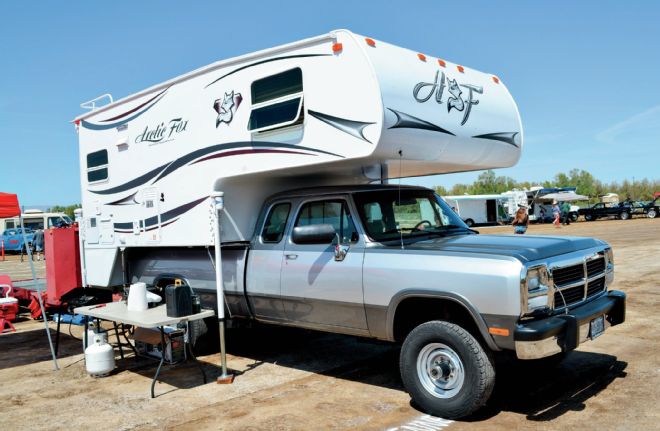
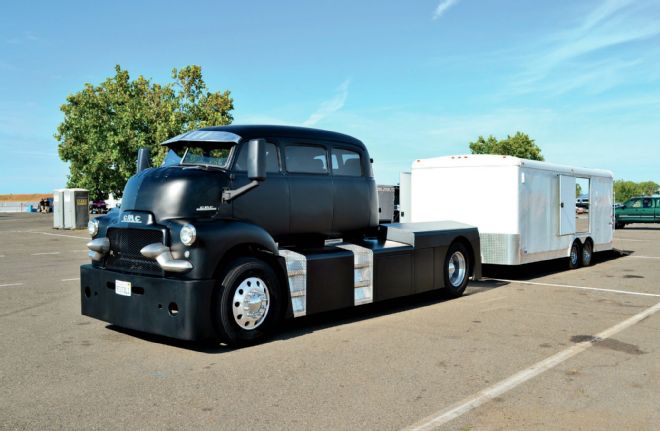
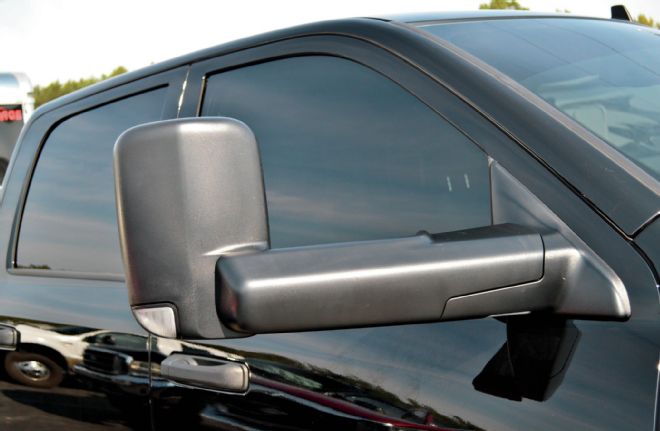
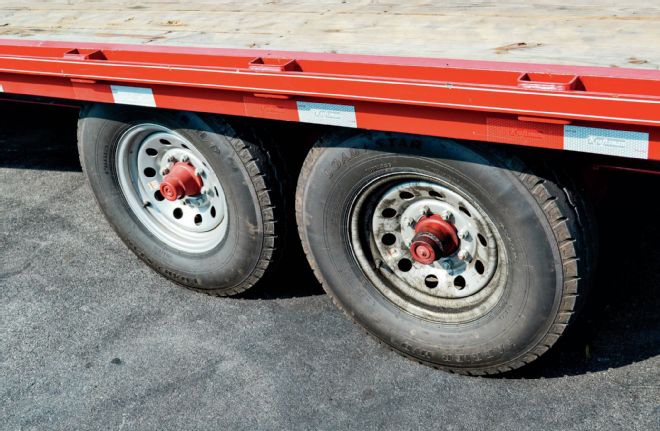
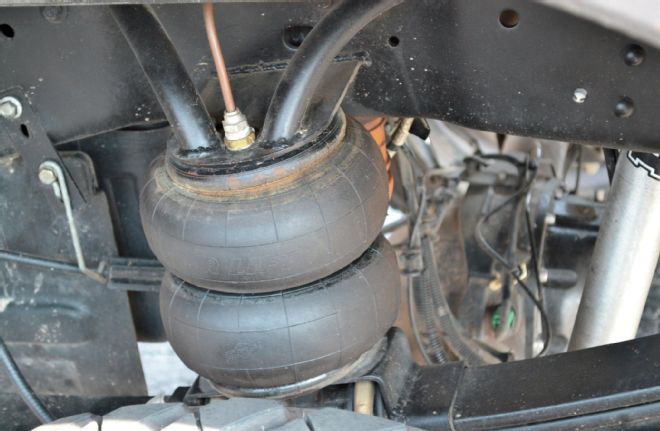
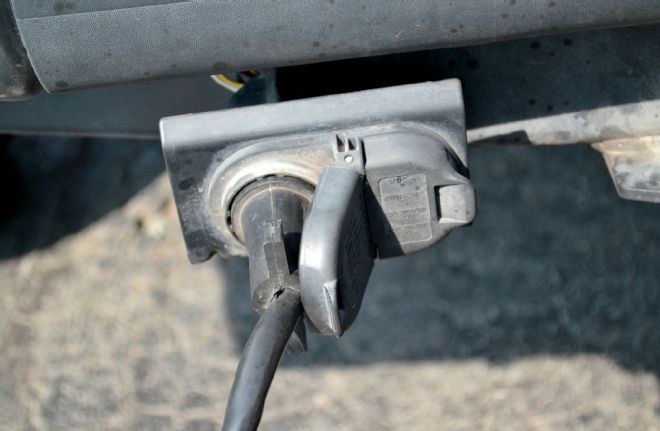


 | Fifth-Wheel hitch.Here’s an example of the receiver part of a fifth-wheel hitch on a large camper. The hitch on the truck has a clevis that wraps around the pin, while the large surface area provides good weight distribution and stability, as well as a very high load capacity.
Overloading: Sled Pulling, Towing a Rail Car, towing Mining Equipment, or Towing a House
| Fifth-Wheel hitch.Here’s an example of the receiver part of a fifth-wheel hitch on a large camper. The hitch on the truck has a clevis that wraps around the pin, while the large surface area provides good weight distribution and stability, as well as a very high load capacity.
Overloading: Sled Pulling, Towing a Rail Car, towing Mining Equipment, or Towing a House | Here’s a sight that’s seen across the Midwest all summer: a diesel towing a pulling truck. While the truck may look far back on the trailer, notice that it’s still over and slightly forward of the rear wheels, which creates a balanced load.
The Basics of Driving with a Trailer
| Here’s a sight that’s seen across the Midwest all summer: a diesel towing a pulling truck. While the truck may look far back on the trailer, notice that it’s still over and slightly forward of the rear wheels, which creates a balanced load.
The Basics of Driving with a Trailer | When trying to make tight turns, especially with an enclosed trailer, be sure to take full advantage of the truck’s mirrors. Also notice that this trailer is designed to carry a good amount of weight, based upon its triple-axle design.
Summary
| When trying to make tight turns, especially with an enclosed trailer, be sure to take full advantage of the truck’s mirrors. Also notice that this trailer is designed to carry a good amount of weight, based upon its triple-axle design.
Summary | In the end, if you want to be good at towing, you need to practice, practice, practice. Be cautious, know your truck and trailer’s capabilities, and don’t push the limits. Seek advice from drivers who know more about towing than you do. And finally, get out there and do it!
Five Real-World Towing Mistakes
| In the end, if you want to be good at towing, you need to practice, practice, practice. Be cautious, know your truck and trailer’s capabilities, and don’t push the limits. Seek advice from drivers who know more about towing than you do. And finally, get out there and do it!
Five Real-World Towing Mistakes
